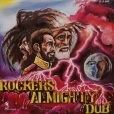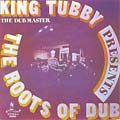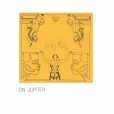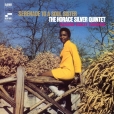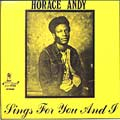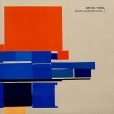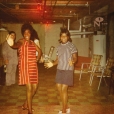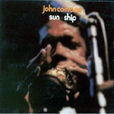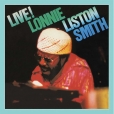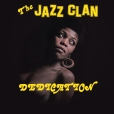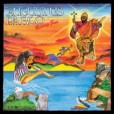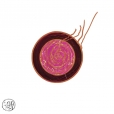Your basket is empty

It was intended that one of Hudson’s teenage sons would voice the dubs. In the event the Love Joys, Wayne Jarrett, and most inimitably Hudson himself featured at the microphone. Like Wackies, Hudson was a Studio One devotee — ‘I used to hold Don Drummond’s trombone for him so I can be in the studio’ — and the album follows Coxsone’s recent strategy of overdubbing signature rhythms.
The Studio One sides were aimed at the dancefloor; Hudson’s reworks of tracks like Melody Maker are more psychological. Heavy Barrett Brothers rhythms are pitched down and remixed deeper still with reverb, filters and other distortion, and overlaid with new recordings of guitar, percussion, keyboard, voice, often crazily treated.
Originally released in 1981 on the Joint International label, in NYC.
Legendary, strange, compelling music.
‘Investigations of the secret dialogue between the trickling of pond waters and the faint percussive reverberation of stalactites and stalactites. Rocky sediment played as tubular organs, glockenspiels, xylophones, stone marimbas. Crystalline timbral variations and subtle microtonal passages recall the chimes of Tibetan gongs and bells, the scales of Java and Bali. Amidst muffled pauses and silences, trills and rings, echoes and tremolos, hisses and pops of vibration, Maioli — often responding directly to polyrhythms created by dripping and falling water — builds his most imaginative sound-world.’
Says Maioli: ‘Beginning in 1986, my daughter Luce and I started experimenting with sounds in the spectacular caves of Toirano. We lived in this Ligurian town for three years at the beginning of the 1990s. A total immersion in prehistory. There are traces in the Upper Paleolithic of repeated percussion on stalactites and stalagmites. Not all stalactites and stalagmites make sounds when struck, but some reveal truly extraordinary and incredible sounds, from powerful low gongs to subtle, crystalline sounds. We also recorded (exceptionally) these fantastic sounds in the caves of Borgio Verezzi by hitting the stones directly with our hands or with special clappers so as not to damage them, with the supervision of the speleological guides.’
Outstanding Tubbys.
From 1979, and including UFO — rumbustious disco, Arkestra-style, featuring Marshall Allen on oboe, with solos from John Gilmore, Taylor Richardson and Michael Ray (who also mixed the album, layering in pre-recorded material).
Seductive Fantasy lines up John Gilmore, James Jacson’s bassoon, some fine baritone saxophone and some electric guitar and bass, Marshall Allen’s oboe and Eloe Omoe’s bass clarinet, with great piano-playing from Ra throughout, and towards the end some arco strings.
‘Classic Vinyl.’
At the turn of the sixties, pushing at the soul-jazz envelope (and tripping out on Eleanor Rigby) — with Lee Morgan, Julian Priester, Bennie Maupin, Melvin Sparks, and Leo Morris.
Whoa this record is totally killer.
Intensely concentrated, but with a fresh spontaneity; super-charged with expressivity.
The singing is riveting, diva-esque; the mbalax rhythms are dazzling.
At every turn there are sensational, thrilling injections of Basic Channel and Rhythm & Sound.
Hotly recommended; it’s a must.
Khadim is a stunning reconfiguration of the Ndagga Rhythm Force sound. The instrumentation is radically pared down. The guitar is gone; the concatenation of sabars; the drum-kit. Each of the four tracks hones in on just one or two drummers; otherwise the sole recorded element is the singing; everything else is programmed. Synths are dialogically locked into the drumming. Tellingly, Ernestus has reached for his beloved Prophet-5, a signature go-to since Basic Channel days, thirty years ago. Texturally, the sound is more dubwise; prickling with effects. There is a new spaciousness, announced at the start by the ambient sounds of Dakar street-life. At the microphone, Mbene Diatta Seck revels in this new openness: mbalax diva, she feelingly turns each of the four songs into a discrete dramatic episode, using different sets of rhetorical techniques. The music throughout is taut, grooving, complex, like before; but more volatile, intuitive and reaching, with turbulent emotional and spiritual expressivity.
Not that Khadim represents any kind of break. Its transformativeness is rooted in the hundreds upon hundreds of hours the Rhythm Force has played together. Nearly a decade has passed since Yermande, the unit’s previous album. Every year throughout that period — barring lockdowns — the group has toured extensively, in Europe, the US, and Japan. With improvisation at the core of its music-making, each performance has been evolutionary, as it turns out heading towards Khadim. “I didn’t want to simply continue with the same formula,” says Ernestus. “I preferred to wait for a new approach. Playing live so many times, I wanted to capture some of the energy and freedom of those performances.” Though several members of the touring ensemble sit out this recording — sabar drummers, kit-drummer, synth-player — their presence abides in the structure and swing of the music here…
‘One of the best, rarest and most sought after South African recordings of the early 1970s, available again for the first time since its original South African release — the tough, jubilantly swinging township groove of The Jazz Clan’s 1973 debut LP, Dedication. It captures the acoustic jazz sound of the early 1970s in its pomp — a handful of tightly wound songs jostling for space, blending uptempo soul-jazz sensibilities with Latin influences and pronounced township jazz accents, the latter especially audible in Dimpie Tshabalala’s piano vamps, Jeff Mpete’s pattering hi-hat emphases, and the unmistakably South African swagger and dip of the horns on cuts like Rabothata. It is music on the brink of a transition, looking ahead but still dedicated to the sound of the golden years, and it could have been made nowhere else on earth but in Soweto.’
From the same 1979 recording sessions as Strange Celestial Road, this is one of Sun Ra’s best-loved, funkiest records, with John Gilmore in full flight, and a bigger Arkestra than had just played the Moers festival.
Vinyl selections from CD Volumes 1, 4 and 8… featuring Mulatu Astatke.





